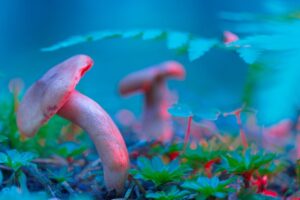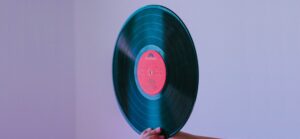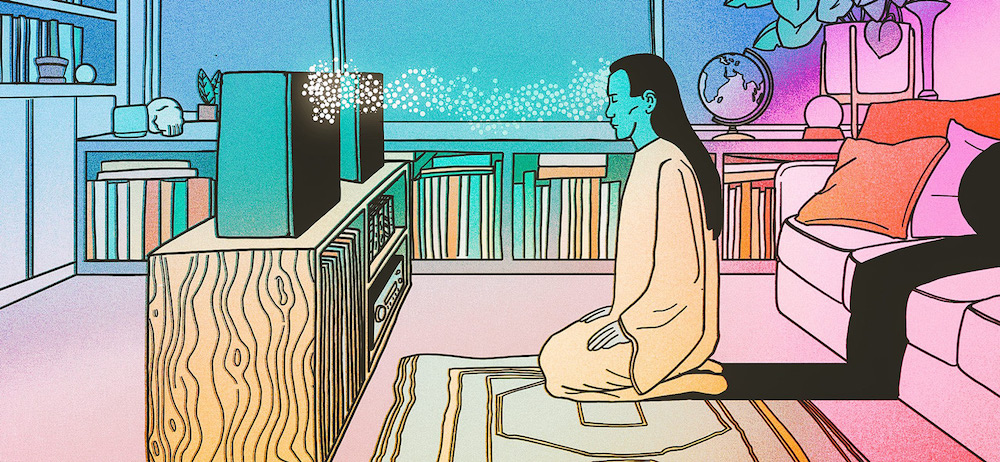Although clinical psychologist Bill Richards is acknowledged and celebrated as one of the godparents of psychedelic therapy, he’s also been a concurrent pioneer for more than half a century in what one might term in the Spotify era as “the art of the playlist.”
His keen ear for the selection and arrangement of specific pieces of music in just the right fashion originated out of duty to the scientific method and simple practicality rather than a quest for the ultimate “party mixtape,” of course. But, after exploring the intersection of music and hallucinogens such as LSD, DPT, MDA and, above all, psilocybin — the active psychedelic compound in what are often called “magic mushrooms” — as a tool in alternative therapy since the mid-1960s he’s definitely honed a DJ-like sensibility for what works and what doesn’t in a given context.
Which is why one form or another of the playlist-before-it-was-a-playlist he began developing for use in the nascent stages of psilocybin therapy in collaboration with such like-minded compatriots as Walter Pahnke and renowned music therapist Helen Bonny at the Spring Grove Hospital Center in suburban Baltimore (now part of the Maryland Psychiatric Research Center) way back in 1967 remains a gold standard for continued research along the same lines to this day.
Upon its establishment in September of 2019, for instance, the Johns Hopkins Center for Psychedelic and Consciousness Research called upon Richards to formalize a version of his tried-and-true “psilocybin playlist” to aid in its ongoing research into “how psychedelics can impact brain function and mood in healthy individuals and in patient populations, including conditions such as tobacco addiction and anorexia nervosa as well as anxiety and depression in people with life-threatening cancer.”
Curious listeners can find a truncated version of the seven-hour-and-40-minute Johns Hopkins psilocybin playlist employed in guided “medium- or high-dose” psilocybin-therapy sessions on Spotify and other streaming services (not to be confused with the recently released Jon Hopkins album “Music for Psychedelic Therapy”).
“The challenge is to choose between the ‘very good’ and the ‘excellent’ because you can only have so much music in a six- or seven-hour period,” says Richards, a classically trained pianist and organist. “And so I have, through trial and error over decades, kind of gravitated to what has seemed to work well with a lot of different people from different professions, educational levels, cultures, races, etcetera, y’know? And some of it has passed the test of time, if you will.”
Bill Richards’ first encounter with psilocybin
Somewhat ironically, despite nearly 60 years of probing music’s potential in conjunction with the administration of synthesized and painstakingly, legally obtained psilocybin to ease, if not engender the healing path towards what has become clinically and colloquially known as “mystical consciousness, his own first approach to the “mystic” through the same was achieved under far less romantic circumstances while he was a 23-year-old graduate student at the University of Göttingen in Germany in 1963.
My first experience was before ‘set and setting’ was recognized so I was just given a shot of psilocybin and left alone in a little basement room with a nice, little narrow window looking out over the hospital garbage cans . . . In spite of that I had a very profound experience, although that’s another story.
“My first experience was before ‘set and setting’ was recognized so I was just given a shot of psilocybin and left alone in a little basement room with a nice, little narrow window looking out over the hospital garbage cans,” he says dryly. “In spite of that I had a very profound experience, although that’s another story.”
Once Pahnke arrived at Göttingen, flush with fresh knowledge of the use of music in then-controversial experiments with hallucinogens by Timothy Leary, Richard “Ram Dass” Alpert and Ralph Metzner at Harvard University — as well as in the psychedelically assisted treatment of disorders such as alcoholism by Canadian psychiatrists and biochemists Humphry Osmond and Abram Hoffer at Saskatchewan’s Weyburn Mental Hospital in research dating back to the early 1950s — Richards was convinced to undertake another session (actually his fifth) accompanied by music.
“This was all legal in those days and a perfectly reasonable thing for a graduate student to do, especially if you wrote a good report,” chuckles the genial Richards, whose easy laugh and avuncular manner quickly betray him in conversation as far more of a “Bill” than a “William.” “So we went record shopping.”
Music as a secondary guide in a guided psychedelic therapy session
Pahnke and Richards came back with a 33-RPM vinyl copy of Brahms’s German Requiem and a 45 of Bach’s Fantasia and Fugue in G-minor for pipe organ (“which I happen to love”), among other recordings. And so, as detailed in Richards’s compelling 2016 memoir “Sacred Knowledge: Psychedelics and Religious Experiences,” on Valentine’s Day of 1964 he received an intramuscular injection of 28 mg of psilocybin and … well … here we are.
“When I had my higher-dose session, which proved to be profoundly transcendental, we used the Brahms Requiem,” he recalls today. “And clearly I got deep inside it. I don’t know if I would say I got into the mind of Brahms and beyond, but it was certainly a very profound experience of understanding music as the language of the gods, if you will, going beyond what speech can communicate.”

Ever since, Bill Richards has been convinced of the value of music as “a non-verbal support system” — a sort of secondary “guide,” as it were — in a guided psychedelic-therapy session, a source of encouragement along the path to transcendence able to “just be present” alongside the actual psychedelic therapist, whose role is always “not to interfere, but to provide structure and support if it’s needed.”
Much of his professional career has henceforth been dedicated to deducing how and why music intersects so well with psychedelics in the treatment of everything from substance abuse and severe depression to alleviating the fear of death in cancer patients in palliative care, not to mention what music works best in therapeutic situations.
It was during his time working with Bonny (“a very fine violinist” herself, he notes) in Maryland that Richards and his fellow researchers gravitated towards the idea “of what wasn’t yet called a ‘playlist.’” Mainly for utilitarian reasons.
“We were always lying on the floor actually trying to decide what 33-RPM record to choose next,” he says. “So when I look back on it, we were kind of distracted from being ‘fully present’ with a research volunteer because there was this ‘What music shall I choose next?’ message going in the back of our brains.”
The creation of the psilocybin playlist
For her doctoral dissertation, Bonny came up with a series of cassette tapes earmarked for specific stages of the psychedelic experience, paving the way for the even more seamless digital-age playlists that proliferate to this day in research into the benefits of combining music with mushroom therapy and psychedelic therapy, in general.
Bonny decreed that “it is the wordless meaning of music which provides its power of direction and emotional structure.” And, appropriately, Bill Richards and disciples of his time-honoured playlist abilities have largely stuck to wordless music over the years.
The Johns Hopkins psilocybin playlist, for example, still leans heavily on classical music, mingling the truly “classicist” likes of Vivaldi, Bach and Brahms with such 20th-century composers as Samuel Barber, Henryk Górecki and Arvo Pärt.
The structure is carefully considered, designed to usher the subject through different stages of the psilocybin experience, beginning with — as Bill Richards puts it — “music to play in the background before you take the drug and you’re just kind of chatting about how well you slept” to “music for when the drug is first taking effect and the beginning of the ‘ascent’” on to music “essentially for the dissolution of the ego and you’re on your way to ‘the face of god,’ if the dosage is high enough.”
There’s what we would call ‘peak’ music and ‘post-peak’ music that just seems supportive and appropriate, and then there’s ‘welcome back to earth’ music, which tends to have words and be more popular — something you would recognize.
“There’s what we would call ‘peak’ music and ‘post-peak’ music that just seems supportive and appropriate, and then there’s ‘welcome back to earth’ music, which tends to have words and be more popular — something you would recognize,” he says. “But I feel like what really matters is the structure of the music in terms of non-verbal support as you’re going into these states of consciousness beyond the everyday personality, okay? I think of it as non-verbal structure, music that’s kind of ascending chromatically and opening up or unfolding and not just sitting there with a steady rhythm. And also not surprising you with anything that would startle you.
“That’s an important point, too: music for people receiving a psychedelic for the first time may need to be more carefully structured than (for) the experienced psychonaut, who’s pretty secure in those inner worlds and willing to explore just about anything. These are generally people who would never take psychedelics on their own and are being treated for addictions or depression or adjusting to a terminal-cancer diagnosis or whatever, y’know? So we tend not to be terribly ‘experimental’ with them.”
The importance of picking the perfect track
Something comforting and gently encouraging a path to higher states is preferred, then, over more stereotypically “psychedelic” offerings from, say, Pink Floyd or the Grateful Dead or Aphex Twin. It’s best not to throw something into the mix that’s going to send the subject on a spiral into paranoia or panic, and music that they’d prefer to listen to at home tends to be avoided — although recent studies by the likes of U.K. researcher Mendel Kaelen have suggested that presenting those same subjects with music to which they’re not personally inclined or that they actively dislike can have a confusing, if not negative effect on the session.
“While it is satisfying to know that the music selection worked well for the majority of participants in this study, we also learned from closely listening to those for whom the music did not work well,” Kaelen wrote in a 2017 summary of his work for the Multidisciplinary Association for Psychedelic Studies (MAPS) website. “From this, we identified three ingredients in the music-experience that predict therapeutic changes: 1) Liking, referring to appreciation of the music’s style and quality; 2) Resonance, referring to the degree of harmony between the music and the state of the listener; and 3) Openness, referring to the degree to which the listener was accepting the influences of the music, rather than wanting the experience to be different. The higher individuals scored on each of these, the stronger was their therapeutic response. This knowledge may help treatment providers improve their use of music to support the therapeutic process, which is highly dynamic and unique for each individual.”

Bill Richards, for his part, isn’t convinced that a single piece of music is ever the real trigger for “mystical experience” within a given subject.
“It’s kind of an intuitive art, y’know, and who knows how well we did?” he says of his own playlists. “But I put very little stock in the preferences of either the patients or the therapist — what you would normally listen to every day at home – except for when you’re just coming back to everyday reality. And then I think you can appreciate just about anything and maybe your favourites are enjoyed as never before, y’know?
“It’s hard to put it into language. I’m not sure if music causes or accompanies the ‘opening.’ It oils the gears, allows them to open more fully, makes it possible to go deeper within than you might if you didn’t have music. But I don’t feel that the content of the session is in the music, if you follow me. For example, I’ve played the Kyrie of the Bach Mass in B-Minor for a Roman Catholic priest who wanted to see the ‘beatific vision’ and then the content of the session was early-childhood sexual abuse. You kind of deal with what your psyche presents and the music helps to deal with it, but spiritual music doesn’t necessarily cause spiritual experience.”
Indeed, says Bill Richards, “people tend to love the music they heard when they were having profound experiences” even if they weren’t previously inclined to it. And if you already loved that music? Well, he’s living proof that one can experience that same music with fresh ears within the context of the psychedelic experience.
“You know Gorecki’s third symphony? I’ve experienced that ‘from within,’ if you will, and it’s absolutely incredible,” he enthuses. “The words are sung are in Polish and the meaning of them is kind of a sad poem, but it’s not the content of the words at all — it’s the structure of the song, the soprano voice emerging out of the orchestra. And it’s just awesome, y’know?”

